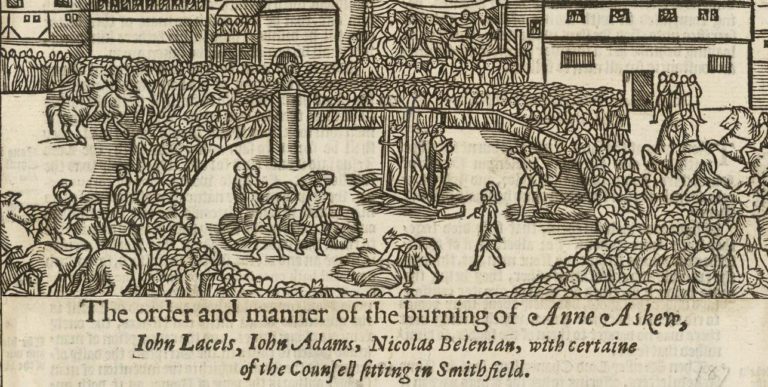Part of the ‘Preaching on’ series.
For many of us, preaching on Romans seems like the Everest of preaching, or like what playing Hamlet is for an actor: you need to spend a career preparing for it, and shouldn’t do until you’re ‘ready.’ But I want to say: go for it. Yes, Romans is a central book in the New Testament and is easily Paul’s most systematic treatment of Christian life and faith. Yes, it is filled with exegetically tricky bits (I’m looking at you, chapter 7) and pastorally sensitive sections (such as chapter 1). In the last fifty years there has also been academic debate about Romans and in particular what the concepts of justification and righteousness mean in their original Jewish context (the ‘New Perspective on Paul’).
But that doesn’t mean you can’t preach on it well, or do it justice, or whatever you’re scared of not doing. Romans puts its pants on in the morning, just like every other New Testament book. It is still God’s word. It is understandable, explicable, and applicable. In fact, Paul says that he wrote Romans to ‘remind’ his readers of things they already knew (15:15). So don’t be intimidated by Romans. It won’t bite.
Series Length: Neither Too Quickly, Nor Too Slowly
You do well to give careful thought to the series structure and length. Some preachers tend toward overview, keen to polish off the whole book in a term. Others will be more like Martyn Lloyd-Jones, creeping through it verse by verse, extracting every bit of exegetical juice.[1] I don’t recommend either. Preach on it too quickly and you’ll miss good stuff unnecessarily, leaving your listeners unsatisfied. Preach on it too slowly and people will become bored; it will cease to be an exegetical series and become a doctrinal series, giving people a wonderful view of the trees but no idea of the wood.
Here’s the approach I took:
The Foundations of the Gospel
- Introduction (chapter 1:1–17).
- The problem of sin (chapter 1:18–32).
- The judgment of God (chapter 2:1–16).
- Religion is no solution (chapter 2:17–29).
- The universality of sin (chapter 3:1–20).
- God justifies sinners by the death of Jesus (chapter 3:21–31).
- Justification by faith (chapter 4).
- Peace with God (chapter 5:1–11).
- Solution to the problem of original sin (chapter 5:12–21).
This great section takes the congregation through the gospel basics. It works wonderfully for evangelism. There are sections here that need to be dealt with sensitively: the teaching in chapter 1 about homosexual sex is enormously confronting to secular listeners, as is the teaching about God’s wrath in chapter 2. Like the rest of the letter, there are also significant exegetical twists and turns throughout this section, so you’ll need to prepare carefully.
Christian Experience in the Overlap of the Ages
- Freed from sin, to lead a new life (chapter 6:1–14).
- Freed from sin, to serve a new master (chapter 6:15–23).
- But . . . we’ll still struggle with sin (chapter 7).
- God will help us fight sin (chapter 8:1–17).
- God will help us deal with suffering (chapter 8:18–39).
- God chooses who to save (chapter 9:1–29).
- But people need to choose salvation too! (chapter 9:30–10:21).
- God will save all his people, both Jews and Gentiles (chapter 11).
In my view, this central section is largely about eschatology. That is, there’s a part of Paul that would love to jump straight from the gospel’s foundations to its application in chapters 12 to 16, but before he does, he has to address the lived experience of Christians between Jesus’ first and second comings. We still sin and suffer. Why? What are we to do about it? Also, what about God’s promises to his chosen people, the Jews? Does the gospel, which says salvation is by faith, not community membership, contradict God’s promises to Israel?
One note: chapters 9 to 11 offer the most sustained treatment of predestination in the Bible. Some of your people will struggle with this. So be sensitive, but don’t be scared (I remember hearing one sermon on this whole section titled ‘Oh No, Not Romans 9-11!’).
Therefore…
- Living sacrifices (chapter 12:1–2).
- Service and humility (chapter 12:3–8).
- Conflict resolution (12:9–21).
- Being good citizens (chapter 13:1–7).
- Love and decency (chapter 13:8–14).
- Weak and strong consciences (chapters 14:1–15:13).
- Evangelism (chapter 15:14–33).
- The community of faith (chapter 16).
‘Therefore’, in light of everything Paul’s written in chapters 1 to 11—this is the rubber-hits-the-road part of the book, and it couldn’t be more practical. Make the most of it: apply, apply, apply.
Final Tips
Give lots of examples of the concepts you’re explaining, and leaven your sermons with illustrations and stories, to explain the concepts and give your listeners a break. Romans is very dense material. It is like a tightly argued essay, with not a word wasted (in fact, in many cases, Paul seems to get so excited he actually leaves out lots of words, skipping over ideas and expecting you to fill in the gaps!). For more concrete learners, it will be hard going. Charles Spurgeon said, ‘The human mind is a picture gallery, not a debating hall’, and that’s never more important to remember than when preaching through Romans. Help people see the truths of Romans, not just hear them.
Don’t get too bogged down in research. You may feel you’ve got to read a dozen commentaries before you can start. But after the third or fourth commentary, they will say things you’ve already read, and you’ll get swiftly diminishing returns. Find two really good commentaries, one short, to give you the overall picture of the book and each passage, and one long, to help untie the exegetical knots, and stick with these. When necessary, consult one or two back-up commentaries if you get stuck.
Offer five minutes of Q&A time after each sermon. That way, you don’t have to dive down every rabbit hole or give every caveat during your sermon. Instead you can take a clean line through the text when you preach. I realise that some preachers are better at Q&A than others, so you’ll need to be aware of your limitations. You could also provide some giveaway resources or recommended listening/reading lists to complement the sermons.
[1] David Martyn Lloyd-Jones, a mid-twentieth-century Welsh preacher, famously took thirteen years to preach through Romans in his mid-week expositions, going through it more or less a verse at a time.















